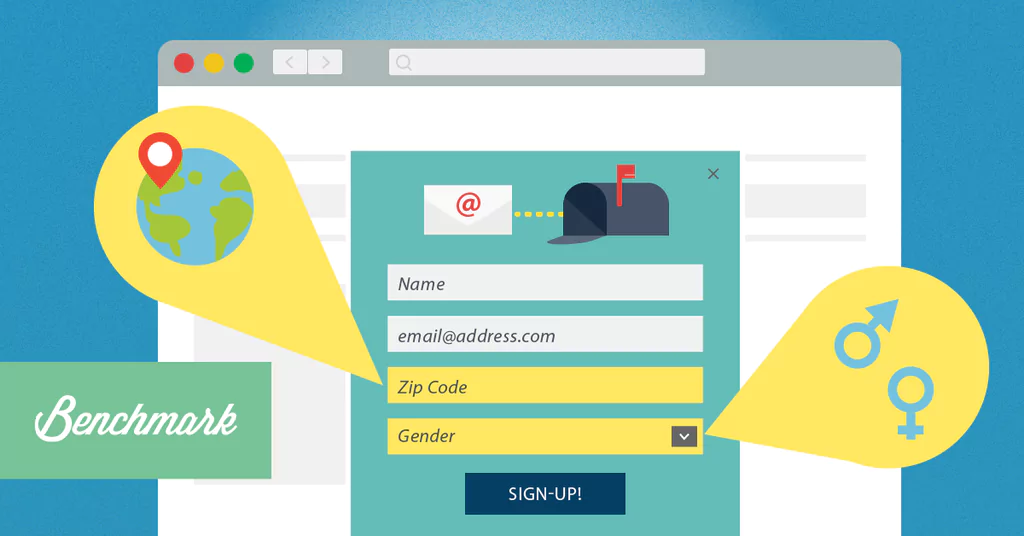Technology is like the ocean. It ebbs and flows and can change on a dime. Take, for instance, email. When electronic mail first came on the scene, the idea of quickly sending a correspondence instead of waiting a couple of days for snail mail felt like magic. The tide was in, and the possibilities were endless. Pretty soon, email marketing became one of the best ways to reach and nurture your audience.
But like all periods of greatness, there comes a time when the light fades a bit. And in an instant, the tide went out, leaving tin cans of spam in its wake. Email became inundated with clutter and junk, and people began to dread checking their inbox. Eventually, it became an unpopular form of digital marketing.
But, with 60% of marketers claiming email is the biggest source of ROI, the tide is coming back in again.
By the year 2022, the number of active email users is forecasted to reach 4.3 billion people.
The rise of intelligent email service providers and securely encrypted firewall technology has gained the trust of consumers once more, leading to the development of automated sales and marketing technologies that streamline email strategies. These programs produce a lot of data that a brand should know how to measure and put to work.
But the key is in knowing what metrics to look at.
Email Marketing Metrics to Measure
Every business has different objectives they want to reach. That means there is no set standard for what you must measure in an email campaign. Your particular business goals should drive the metrics you use to measure success.
With that said, there are a few go-to benchmarks to note when formulating a plan, benchmarks that make sense for most marketers to look at and consider.
1. Open Rate
The top priority when sending an email is to have it opened. This is the first sign of interest that can spark a variety of campaigns. It’s also the best way to tell whether your subject lines are engaging enough to encourage people to read the email.
The benchmark figure for an acceptable open rate varies by industry. The average for all industries is approximately 20%. Anything lower means you probably need to reconfigure the campaign.
Total vs. unique opens is also something to compare. Did the prospect open the email once, or did they go back and read it a few times? This data can be very telling and can be used to better position leads in the marketing funnel.
2. Mobile Open Rate
Every marketer knows that mobile optimization is key to reaching your consumers. We’re always on our phones, and that includes when we’re consuming email content.
Keeping that in mind, the rate at which your prospects open emails on their mobile devices can say a lot about their behavior. If you find the open rate is higher through mobile channels, make sure your campaigns are optimized on mobile, your site is responsive, fonts are larger, your emails aren’t too text-heavy, and the call-to-action isn’t hidden.
3. Click-through Rate (CTR)
The goal of most email campaigns is to get subscribers to convert on a webpage from an email you send. This is usually presented in the text of the email as a call-to-action (as mentioned in the previous point). It can be a button or link that redirects the consumer to a promotional item or branded offering.
The CTR signifies the percentage of people who clicked the link in your email vs. the number of people who opened it. It’s a metric that indicates a willingness to convert. When people click the link, it means you’ve successfully compelled them to the next step. Half the battle is won.
A benchmark for a healthy email CTR is 7.77% (add an extra 14% if you personalize the subject line).
The CTR is essential because it’s the gateway metric to conversions. The more people that “click-through,” your email directly relates to the success of the email you’re sending. It can help you determine that the subject and content are engaging, drawing people in, and guiding them through the inbound funnel.
4. Reply Rate
This is the most vital metric to track, and yet it is often ignored. Yes, you need your email opened before you can even see a reply, but even if you have an open rate of 50%, it’s not a metric that is directly connected to revenue. The reply rate is.
This figure will always be on the lower side. That’s because some leads may simply click the link without ever replying. However, a reply leapfrogs leads into the hot part of the funnel. The business standard for a reply rate is typically between 5-6%.
Additional Email Marketing Metrics to Consider
Don’t stop there! Here are a few more metrics to consider measuring for email marketing success:
- Bounce rate
- Spam score
- Time spent viewing email
- Purchase rate
- Unsubscribes
These are all pretty self-explanatory. But, these additional five metrics can ultimately help you upgrade your email marketing. Determining if people are disengaging from your emails, if you’re being marked as spam, or if your emails are encouraging buying behavior are important indicators of success.
Ongoing Analysis
A/B testing is a great way to measure the success of an email marketing campaign, and it starts with the subject line. If you find you have a low open rate, try using the same content but with a different subject line, and then see which subject line has a higher open rate.
Improving your email marketing metrics starts with personalization. Studies show that a subject line with the recipient’s first name is 26% more likely to be opened. Know your audience and establish email benchmarks accordingly, so once you have the right information, you can use it to drive successful campaigns that generate revenue.











